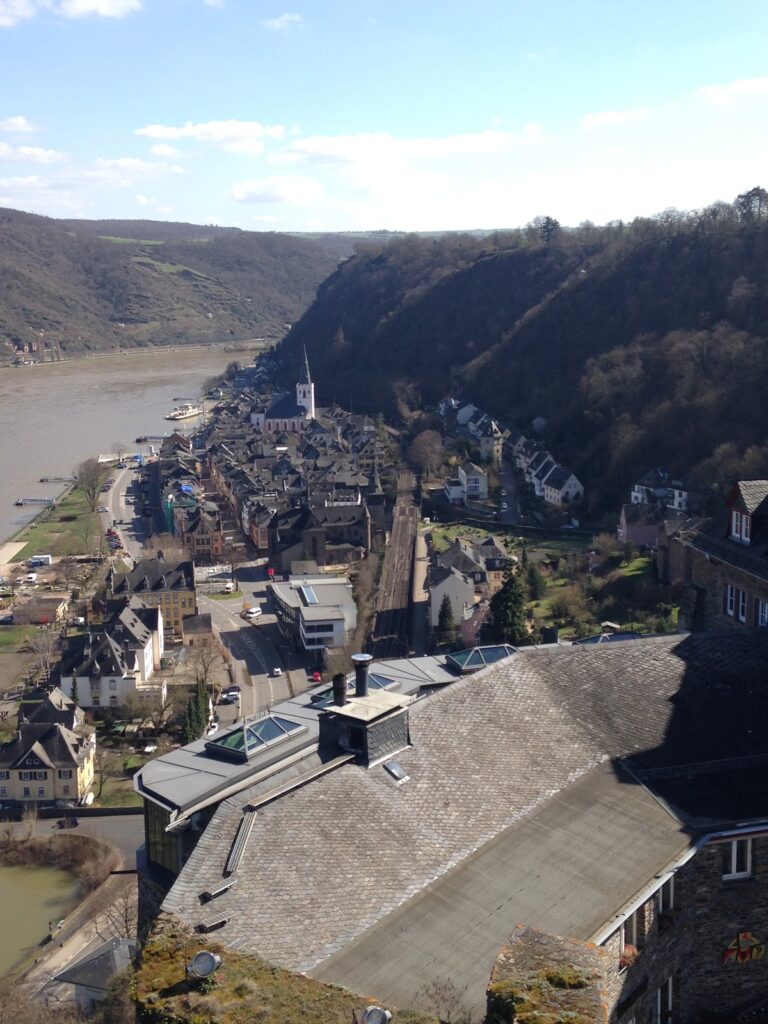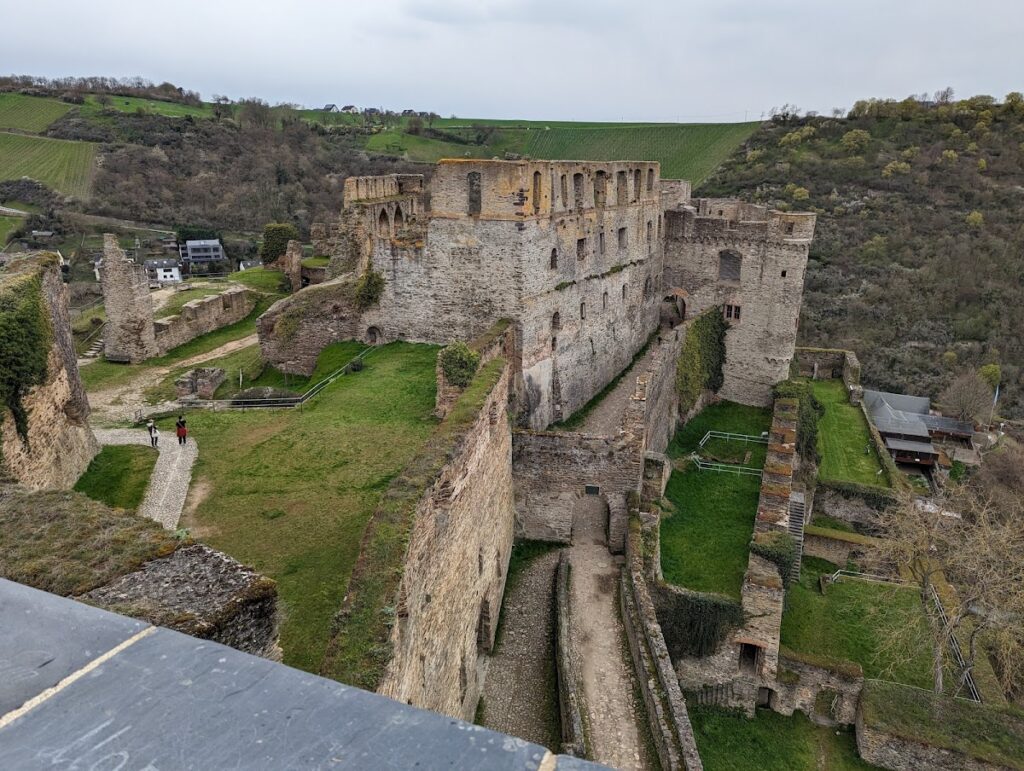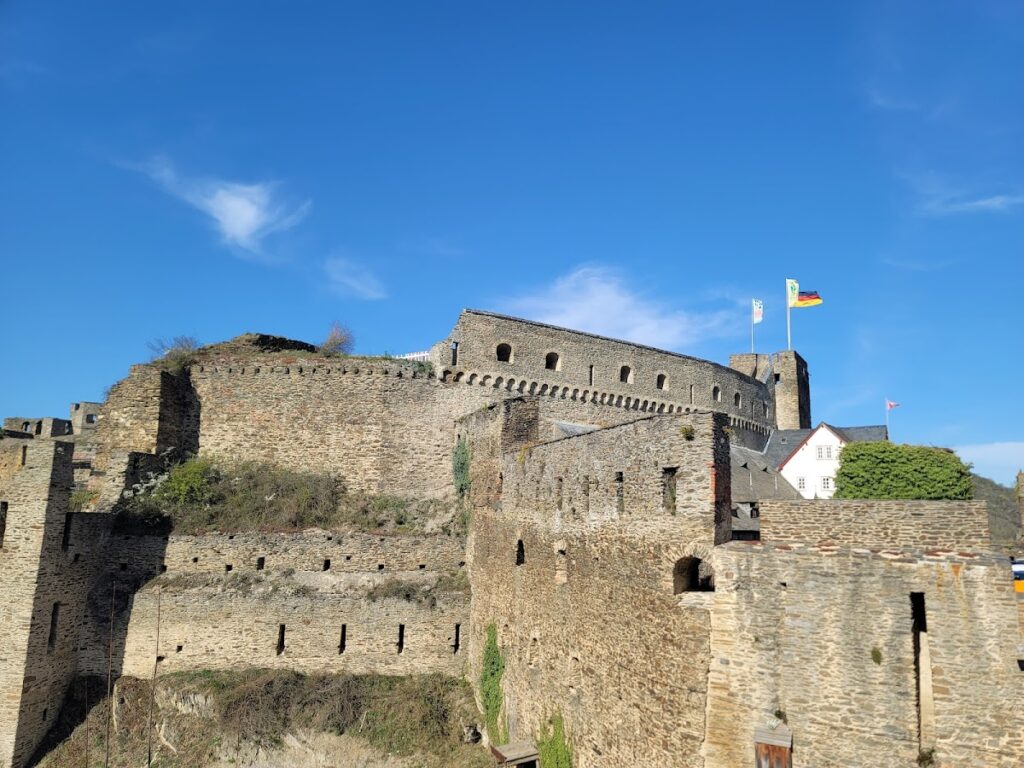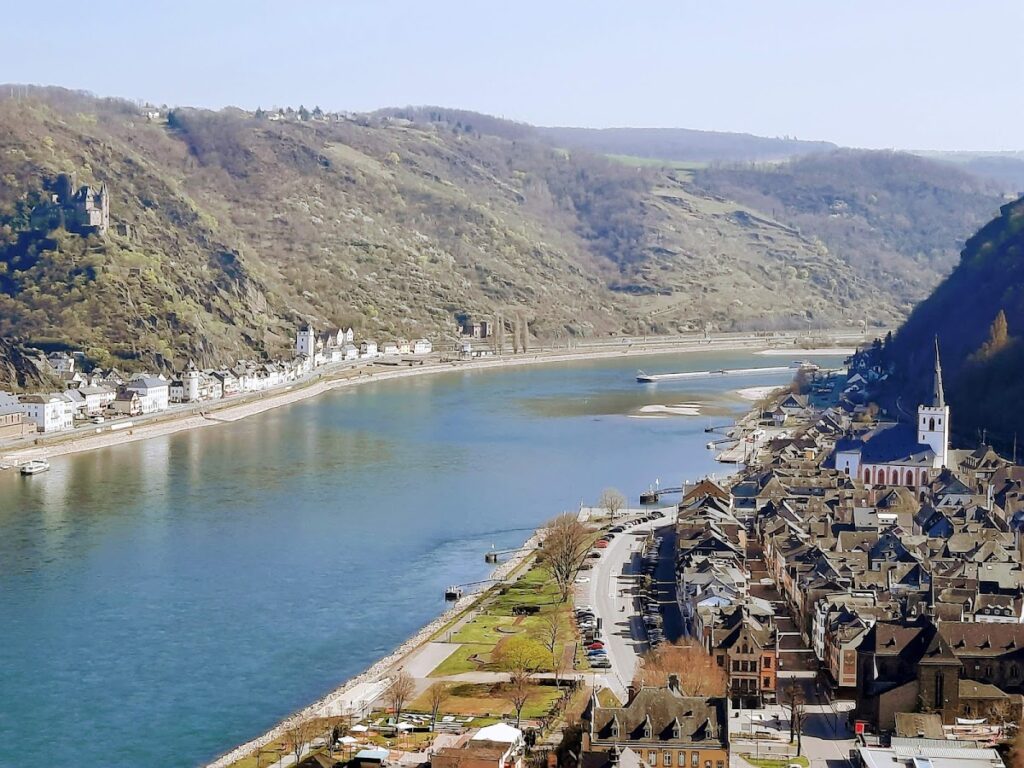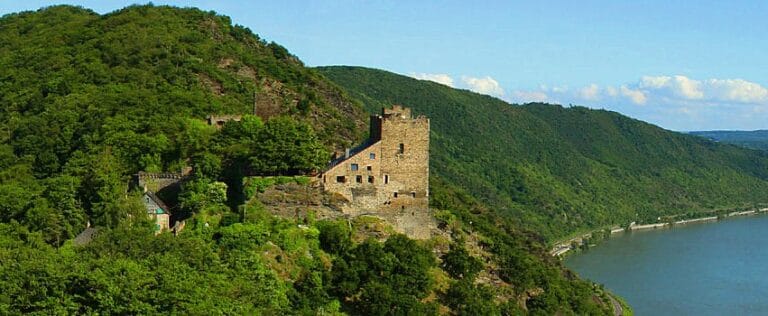Rheinfels Castle: A Medieval Fortress in Sankt Goar, Germany
Visitor Information
Google Rating: 4.5
Popularity: Medium
Google Maps: View on Google Maps
Official Website: www.stadt-st-goar.de
Country: Germany
Civilization: Medieval European
Remains: Military
History
Rheinfels Castle, located in the municipality of Sankt Goar in modern-day Germany, was built by the medieval German nobility. Its foundation dates back to 1245 when Count Diether V of Katzenelnbogen established it as a toll castle to control and levy customs on ships navigating the Rhine River. Early on, the fortress earned a reputation for its strength when it withstood a lengthy siege in 1256 by forces from the Rhenish Cities League, who failed to capture the castle despite blockading it for an entire year.
In the 13th century, the County of Katzenelnbogen split into Upper and Lower counties, with Rheinfels becoming the residence of the Lower County. Between 1360 and 1370, Count Wilhelm II of Katzenelnbogen undertook extensive expansions including the construction of a large round keep, known as a bergfried. Around the same time, on the opposite side of the Rhine, Burg Katz was built, allowing the counts to collect tolls from downstream shipping and creating a double toll system near the town of Sankt Goar.
Following the reunification of the Upper and Lower counties in 1402, Rheinfels retained its status as a noble residence and reached cultural prominence during the 15th century under the rule of Counts Johann IV and Philipp. Philipp notably heightened the bergfried to 54 meters, which at the time made it the tallest known bergfried in Germany. The castle continued to be an important stronghold throughout the centuries, passing through various Hessian noble lines due to inheritance disputes.
In the 17th century, under Landgrave Ernst I of Hesse-Rheinfels, the castle underwent significant fortification between 1657 and 1674, transforming it into a large fortress designed to resist French military advances. Its defensive capabilities were proven during the Nine Years’ War (1688–1697), particularly in the winter of 1692 to 1693, when roughly 3,000 defenders held out against 28,000 French troops. Despite suffering heavy casualties themselves, the garrison inflicted substantial losses on the attackers and successfully repelled the siege.
Rheinfels saw multiple changes in control during the tumult of the Thirty Years’ War and later conflicts, eventually stabilizing under the rule of Hesse-Kassel in the mid-18th century. However, during the Seven Years’ War in 1758, French forces seized the fortress without resistance given their overwhelming military advantage. Later, in 1794, French Revolutionary troops occupied the castle easily after its aging commander fled prematurely. The French then systematically destroyed much of the fortifications between 1796 and 1797, including the demolition of the prominent bergfried and several outer defensive structures.
In 1812, the ruins were sold, and many stones were repurposed in the construction of Ehrenbreitstein Fortress near Koblenz. Later, in 1843, Prince Wilhelm of Prussia—who would later become Emperor Wilhelm I—acquired the site to prevent further dismantling. Since 1925, ownership has rested with the town of Sankt Goar. Restoration efforts were undertaken during the 20th century, notably in the 1960s and 1990s, preserving the site within the UNESCO World Heritage-listed Upper Middle Rhine Valley since 2002. Over time, the name “Rheinfels” emerged as the standard spelling, becoming common from the late 18th century onward.
Remains
Rheinfels Castle occupies a ridge overlooking the left bank of the Rhine River near Sankt Goar, positioned on a natural spur between the river and the Gründelbachtal valley. The castle’s layout reflects centuries of construction, with the original 13th- and 14th-century core forming the basis, heavily supplemented by 17th-century fortress additions that now constitute the majority of the ruins visible today.
Entrance to the site is marked by a gate tower featuring a clock tower about 21 meters tall, built circa 1300. Adjacent to the gate stands the palas known as the Darmstädter Bau, a three-story residential building that originally displayed timber framing with pointed gables and faced a broad courtyard north of the clock tower. Nearby, a spiral staircase tower known as the Treppenturm provides access to the inner courtyard, which once contained stables, kitchens, a bakery, an herb garden, and a brewery, though most of these structures are now heavily ruined.
One of the castle’s most remarkable features is the Große Keller or Great Cellar, situated between the clock tower and palas. Constructed in two stages from 1587 to 1589 where a defensive ditch had once been, this vaulted cellar is the largest in Europe unsupported by internal columns, measuring roughly 24 meters long, and 16 meters wide and high. The walls are up to four meters thick, allowing the cellar to shelter up to 400 people. Historically, it housed a massive masonry wine barrel capable of holding around 180,000 liters; this barrel was sealed with tallow and used until wooden barrels replaced it by the mid-17th century. Today, following renovations completed in 1997, the cellar remains a striking part of the site.
The castle once boasted a towering bergfried with walls three and a half meters thick and a diameter of 10.5 meters, standing at an extraordinary height of 54 meters, making it the tallest known keep of its kind in Germany during the 15th century. A narrower round tower called the Butterfassturm was later added atop the bergfried in the same century. Unfortunately, no visible remains of this iconic tower survive today due to demolition in the late 18th century.
A notable defensive feature is the 14th-century southwestern shield wall flanked by two towers—the clock tower on one side and the Büchsenmeisterturm on the other—separating the core castle area from the inner bailey, or Vorburg. While much of the inner bailey has fallen into ruin, small remnants of the adjacent stables (Marstall) and the Büchsenmeisterturm endure.
The outer bailey and fortress expansions from the 17th century include thick shield walls equipped with embrasures, openings designed for firing artillery. Among these defenses is the “Hohe Batterie,” an artillery battery constructed around 1660 that enhanced the site’s capability to repel attacks using cannon fire.
Underground mining galleries (minengänge) were excavated near the walls around 1600 as part of defensive strategy. These tunnels, about 200 meters in length, were created to be detonated under approaching enemy forces in times of siege. Access to these galleries was available to visitors until recently.
Water supply was ensured by a deep well approximately 60 meters in depth located within the castle grounds, critical for survival during sieges. The castle also retains a reconstructed pillory in the outer courtyard, reflecting medieval judicial practices.
Surrounding the ruins is the Rheinfelspfad, a nature trail that combines historical interpretation with natural history. Along this path, informational panels describe the castle’s past, medieval life, and military technology, while highlighting local flora including rare mosses, lichens, and ferns, as well as Mediterranean plants introduced from a former noble pleasure garden.
Construction materials for Rheinfels Castle primarily consist of local quartzite and slate sedimentary rocks dating from the Devonian period, reflecting regional geology. The surviving ruins represent only about one-fifth of the castle’s original area, yet they offer a vivid glimpse into its complex and layered history. Adjacent to the remains, since 1973, a hotel known as the Romantik Hotel Schloss Rheinfels operates, maintaining a connection to the site’s historical heritage.
